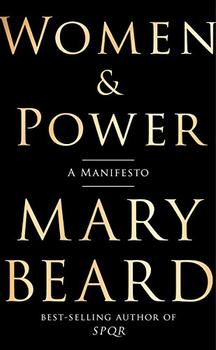 Women & Power by Mary Beard is labeled a manifesto, which comes from the Latin word manifestus, meaning "to manifest, to clearly reveal, or to make real." It is a broad term for a public statement of intent, belief, or a call to action issued by an organization or an individual.
Women & Power by Mary Beard is labeled a manifesto, which comes from the Latin word manifestus, meaning "to manifest, to clearly reveal, or to make real." It is a broad term for a public statement of intent, belief, or a call to action issued by an organization or an individual.
Most nonprofit and political groups have a manifesto of some sort which states their purpose – why they exist and what they hope to accomplish. This allows them to frame the organization's goals succinctly, be able to communicate those aims, and recruit others to the cause. These declarations are also meant to inspire, to share a vision and excite others. For this reason, some corporations are ditching their mission statements – which have a dry static connotation – for the more dynamic manifesto form.
Manifestos come in different forms. For example the United States' "Declaration of Independence" and France's "The Declaration of the Rights of Man and of the Citizen" are both considered manifestos. Other famous manifestos include Karl Marx and Friedrich Engels' "The Communist Manifesto," a pamphlet published in 1848 that summarizes their philosophy; and Martin Luther King Jr.'s famous "I Have a Dream" speech. Some believe songs can be manifestos as well, and cite John Lennon's Imagine as an example. Elements of The Bible, such as the Ten Commandments, can also be considered manifestos.
Manifestos are traditionally thought of as public statements, but there are many websites that propose that individuals should write their own personal manifestos. The logic being that if this type of clarification of purpose can aid a political party or a business, it can help at an individual level as well. Eric J. McNulty, the director of research at the National Preparedness Leadership Initiative, recommends writing an annual manifesto instead of New Year's Resolutions. He states:
A manifesto is a rigorous written account of where you are, where you would like to be, and why. Unlike New Year's resolutions, the personal manifesto isn't tied to the time of year or to specific acts. It is a way to keep yourself focused, thoughtful, and on-track through the ups-and-downs of a busy life. And it can be amended as needed.
He also believes that a manifesto can be valuable when contemplating major decisions such as a job change, or in handling challenging situations such as dealing with a difficult boss.
Yet creating such a lofty-sounding document can be intimidating for some. Elayna Fernandez, host of The Positive Mom blog, suggests the following to keep one from overthinking the process:
At BookBrowse, we believe that books are not an end in themselves but a jumping off point to new avenues of thought and discovery. This is why, every time we review one we also explore a related topic. Such as this "beyond the book" article by Kim Kovacs for Mary Beard's Women & Power: A Manifesto